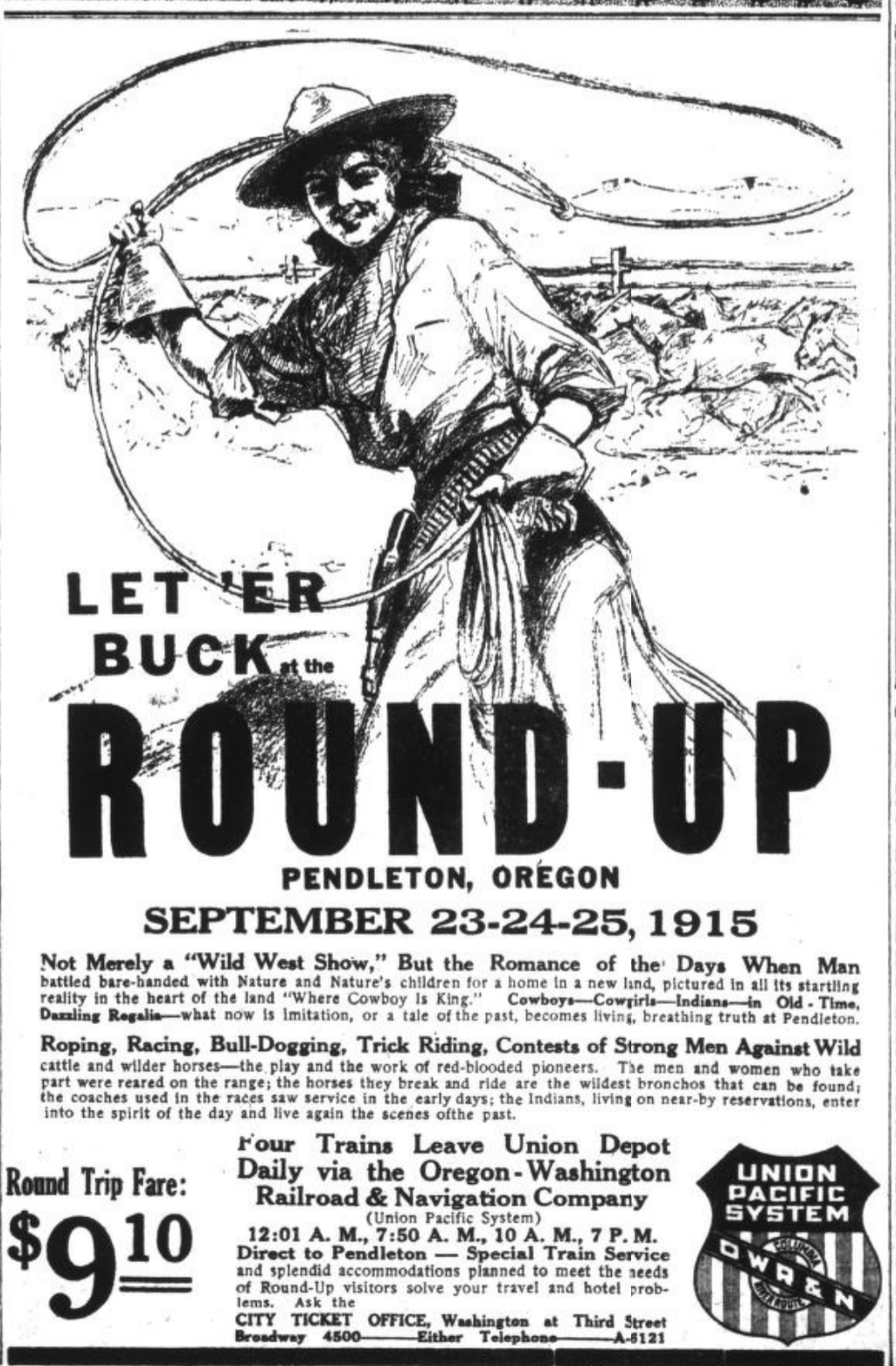The Story of Small-town Rodeo Meets National Fame
How the Annual Pendleton Round-Up became the subject of an American Lifeograph documentary.


For my blog post, I chose an advertisement article about the Savoy theater in Medford that the Medford Mail Tribune published on October 3, 1908. The Savoy was the second moving picture theater built right after the Bijou. It is an interesting article because it was two days after its first opening on October 1 of 1908.
During the Early 1900s the printing of advertisements in the local papers is what brought the people around the surrounding towns and cities to certain venues or events. Everyone these days had access to the local papers and how a company advertised was based on the cost to do so and what information they could fit in a two inch by two in box. Now looking at the Orpheum Theater located in Pendleton Oregon they had a consistent flow of advertisements that would consist of a few specific things.
S. Morton Cohn, as described in an excerpt from Los Angeles Herald titled “Theatrical Magnate May Move Here,” states, “The biggest realty operator in Portland, Oregon; a prominent theatrical magnate with interests in New York, Chicago and San Francisco and is a millionaire several times over.” The excerpt continues to praise Cohn in his endeavors and welcomes him to the city of Los Angeles. Back in Oregon, Cohn owned many theaters and was also known as a very rich man in the theater industry.
When the Dreamland Theater was first created, like many other theaters at the time, it had to be promoted in the newspaper to attract patrons from all over the town of Albany, Oregon. To gain traction the Dreamland Theater would often gain promotional advertisements in the newspapers telling patrons the price of admission, shows being played, acts offered if any. The promotions would complete this information with the showtimes of the films and the days on which the films would be changed.
The Strand Theater in Portland Oregon was a project owned and operated by S. Morton Cohn, as owner, manager, and director of the theater of both the theater and the Strand Theater company. The theater was a well-to-do, but fairly cheap theater that opened in 1916, it showed various photo villas and Vaudeville era pictures during its operating years.hIn this promotion, we see the Strand promoting 4 of its newest shows as well as grandly making it known that their price for all fims was 10 cents, an affordable price for most families in that time.
On July 16 1916 a censorship battle began in Portland with the hope to secure “fair and unprejudiced” censorship of the motion pictures that were being presented in the state at the time. This campaign was opened by the Oregon Motion Picture Mens Association. Petitions where the main way the association worked to get the larger theaters in the area to back the campaign, and once this occurred the petitions were sent to the city commissioners of Portland. The main goal was to grant “theatre men” the right to appeal to the courts if they content was being censored in a specific local area.
The Crescent theater, which operated in Roseburg, Oregon from 1908-1910, was a short-lived theater in Oregon history, although it maintained a high status for their “high class motion pictures”. Since the theater was only around for a short while, information is sparse, however there are bits and pieces of info that I gathered throughout my research that certainly formed an image of what the theater going environment was like at the Crescent.
Film distribution and licensing agencies play a major role in how films are dispersed and delivered to individual theaters in a specific area. One of the major distribution companies in the Pacific Northwest during the early 1900s was the Amalgamated Film Exchange of Portland and Seattle. This exchange company was one of the only licensed exchanges in the area and additionally owned quite a few theaters under the name of the People's Amusement Company throughout Oregon and Washington.
The Empire Theater in Albany was open during the early 1900s and while the population today has reached over fifty-thousand, the city was much smaller back then. The Empire was also not the only theater open in this area at the time, so in order to ensure they would have steady business, this theater was forced to explore alternative promotional strategies. This included many musical performances.